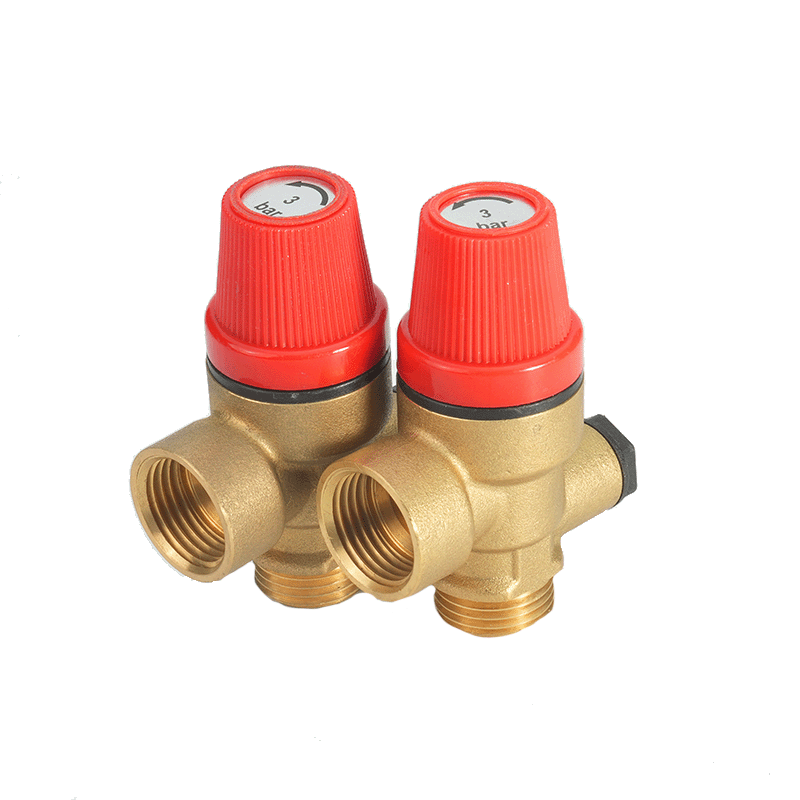Struggling to set the right pressure for your hydraulic pressure relief valve? Incorrect settings can lead to system failures, costly downtime, or even dangerous leaks in your plumbing operations. Don’t worry—understanding the pressure setting of a relief valve is simpler than you think, and this guide will walk you through it step-by-step to ensure your systems run smoothly.
The pressure setting of a relief valve is the predetermined pressure level at which the valve opens to release excess pressure, protecting hydraulic systems from damage. Typically, it’s set 10-15% above the system’s normal operating pressure to ensure safety and efficiency.
This article dives deeper into adjusting and maintaining hydraulic pressure relief valves for optimal performance. Keep reading to discover practical tips and standards to enhance your operations.

How to Adjust a Hydraulic Pressure Relief Valve?
Adjusting a hydraulic pressure relief valve is critical to maintaining system safety and performance. If the pressure is set too high, it can strain your equipment, leading to premature wear or catastrophic failure. Too low, and the system might not function efficiently, causing leaks or insufficient flow. So, how do you adjust it correctly?
Start by consulting your system’s manual to identify the recommended operating pressure. Next, locate the adjustable hydraulic pressure relief valve—usually marked by an adjustment screw or knob. Using a pressure gauge, monitor the system’s pressure. Gradually turn the adjustment screw clockwise to increase pressure or counterclockwise to decrease it. Make small adjustments, testing the system after each tweak to avoid overshooting. Always ensure the valve is set 10-15% above normal operating pressure to account for fluctuations.
Watch for symptoms of a bad hydraulic pressure relief valve, like unusual noises, leaks, or inconsistent pressure readings. These could indicate a faulty valve or improper adjustment. Regular maintenance and precise adjustments can extend the valve’s lifespan and keep your operations running smoothly. At IVALVECRAFT, our valves are designed for easy adjustment and durability, ensuring you avoid costly downtime.
What Are the Guidelines for Pressure Relief Valves?
Understanding the guidelines for pressure relief valves is essential for safe and efficient system operation. These guidelines ensure your hydraulic pressure relief valve functions correctly, protecting your equipment and workforce. Ignoring them can lead to system overloads, safety hazards, or non-compliance with industry standards.
First, always follow manufacturer specifications for installation and maintenance. The hydraulic pressure relief valve working principle relies on precise calibration to release excess pressure when needed. Install the valve in a location with minimal vibration and easy access for adjustments. Regularly inspect for wear, corrosion, or blockages, as these can compromise performance. Testing the valve periodically ensures it opens at the correct pressure setting.
Another key guideline is adhering to system-specific pressure limits. For example, the valve should be set to handle the maximum pressure your system can generate without exceeding component tolerances. Additionally, ensure proper sizing—valves that are too small or large can disrupt flow and pressure control. IVALVECRAFT’s brass safety valves and pressure reducing valves are engineered to meet these guidelines, offering reliable performance for plumbing wholesalers and construction projects.
What is the Standard for Pressure Relief Valve?
Pressure relief valve setting standards are critical for ensuring safety and compliance in hydraulic systems. These standards, often set by organizations like ASME, ISO, or API, define how valves should be designed, tested, and maintained. Knowing these standards helps you avoid penalties and ensures your systems operate safely.
The primary standard for pressure relief valves is that they must open at a precise pressure to prevent system overpressure. According to ASME Section VIII, the valve’s set pressure should be no higher than the system’s maximum allowable working pressure (MAWP), with a tolerance of ±3%. For most systems, the setting is 10-15% above normal operating pressure, as shown in a typical hydraulic pressure relief valve diagram. This allows for safe pressure relief without frequent valve activation.
Valves must also undergo regular testing and certification to meet standards. This includes checking for leaks, verifying the opening pressure, and ensuring the valve reseats properly after activation. Non-compliance can result in fines or project delays, especially in export markets like Germany or the UK. IVALVECRAFT’s valves are manufactured to meet global standards, making them a trusted choice for purchasing officers and DIY chain supermarkets.
Summary
Choosing the right pressure setting for your hydraulic pressure relief valve is vital for system safety and efficiency. By understanding how to adjust the valve, following industry guidelines, and adhering to pressure relief valve setting standards, you can prevent costly failures and ensure compliance. Regular maintenance and precise adjustments will keep your operations running smoothly, whether you’re a plumbing wholesaler or managing a construction project. IVALVECRAFT’s high-quality valves, designed for durability and ease of use, are the perfect solution for your needs.
Choose IVALVECRAFT, choose a reliable partner, enjoy the high quality and best service.


